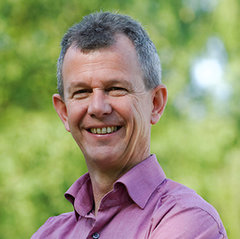Taking stock of
arable farming in Europe
Why Arable Farming?
Staple foods form the core of the daily meals of most Europeans. Among those staple foods one finds many that are the output of arable farming: like cereals, corn and potatoes.
In a similar way, arable products make up the bulk of animal feed. What’s more, all 28 member countries produce arable crops. Clearly, arable farming is central to the EU agri-food sector, its economy and society.
However, the sector also knows its challenges. Changing weather conditions ask for crop varieties that can resist diseases, and fluctuating markets demand a stable yield and supply. Moreover, at the same time the EU’s growing population asks for improved production efficiency, while ensuring a clean environment and reduced C02 emissions.
To take on these challenges, digital technologies are essential. That is also why over 107 of our Digital Innovation Hubs are involved in arable. In this section, and the following, you will be introduced to major developments in and challenges facing arable farming, as well as the role SmartAgriHubs plays in digitalising the sector.

Column
Corné Kempenaar
Senior Scientist,
Wageningen Plant Research
These days the general interest in precision techniques for arable farming are at an all-time high. One way this became apparent to me was during open demonstration days at three arable farms in the Netherlands. These farms are part of The Fieldlab for Precision Farming, NPPL for short. In fact, NPPL is recognized as a Digital Innovation Hub in the SmartAgriHubs project. Its aim is to increase yields, decrease costs of production, reduce negative environmental externalities and improve overall food quality and biodiversity. Right now, a grand total of 16 farms partake in the NPPL project. Within the scope of this project, farmers apply at least two precision agriculture applications on grids of ca 30 m2 within their fields.
During the 2019 demonstration days in August, over 200 farmers visited one of three NPPL demonstration farms to see precision agriculture applications in action, and to hear what these demonstration farmers had to say about the applications. Most interest was shown with regards to the variable rate application of herbicides in crops. The precision farming technique demonstrated that they can produce savings in the order of 23% on inputs, while the level of control remained good and the costs-benefit ratio was slightly positive.
However, despite these clear benefits one big obstacle remains with regards to the uptake of precision agricultural techniques among many arable farmers: farmers are reluctant to use variable rate applications (VRA). This is not only the case in the Netherlands, but in most European countries we can see that the adoption of variable rate technologies for soil tillage, planting, crop care and harvest is slow. This is unfortunate, because the fact is that today GPS and sensor technologies are within reach of the farmers.
So why are farmers slow to adopt VRA? There are multiple reasons.
Some of the technologies are not yet plug and play ready and are still too complicated to use for many end-users. Additionally, there is still a high amount of uncertainty as to the costs and benefits of these techniques. Moreover, farmers are anxious when it comes to sharing their own digital information with bigdata databases. There is a fear that this data will be shared with other institutions and can be used against them.
When you go to a farm you will see that in most cases there is a fervent push for more digital technologies on the farm. However, plug and play solutions remain rare. Whereas it’s easy to link all your personal technology to a Google or Apple account these days, this is not yet the case for on-farm tech. Often, independent validation is also missing for these new technologies. There is, as it were, a gap between supply and demand. In short, farmers ask for easy-to-apply precision agriculture solutions, validated applications and trusted data infrastructures. When these demands are met, the uptake of digital technologies on arable farms could increase exponentially.
Clearly, what is needed to speed up the adoption of VRA and data-driven precision agriculture is a more farmer centric approach. By listening to the needs of farmers we can speed up adoption of data-driven precision agriculture, and by extension a faster transformation towards a more sustainable agricultural sector.
Fun Facts
SmartAgriHubs aims to digitalise European agriculture in five agri-food sectors: livestock, vegetable, fruits, aquaculture and arable farming. This quarter’s issue zooms in on arable farming. What is arable farming? And what role does arable farming play in Europe's agriculture? Find out more in via our fun facts!
Arable crops are at the basis of the daily meals of many Europeans
Arable crops are common wheat, durum wheat, barley, maize, rye, oats, other cereals, rapeseed, sunflower seed, soya beans and protein crops
Arable farming also has non-food purposes, such as tobacco and cotton
24% of all EU land is used for arable farming
24%
62%
Of all the EU land used for agriculture, 62% is for arable farming
Until 2030, the land used for arable farming is expected to decrease by 3 percent
-3%
50%
Half of all EU farmers grow cereals: 6,5 million farmers
Arable has an annual turnover of more than 1 trillion euros
1tn
28
All 28 Member States produce arable crops
40% of the EU cereal production is fed to animals, for protein arable crops, this is 90%.
40%
10%
EU cereal demand is expected to increase by 10% by 2030, mainly driven by feed demand
